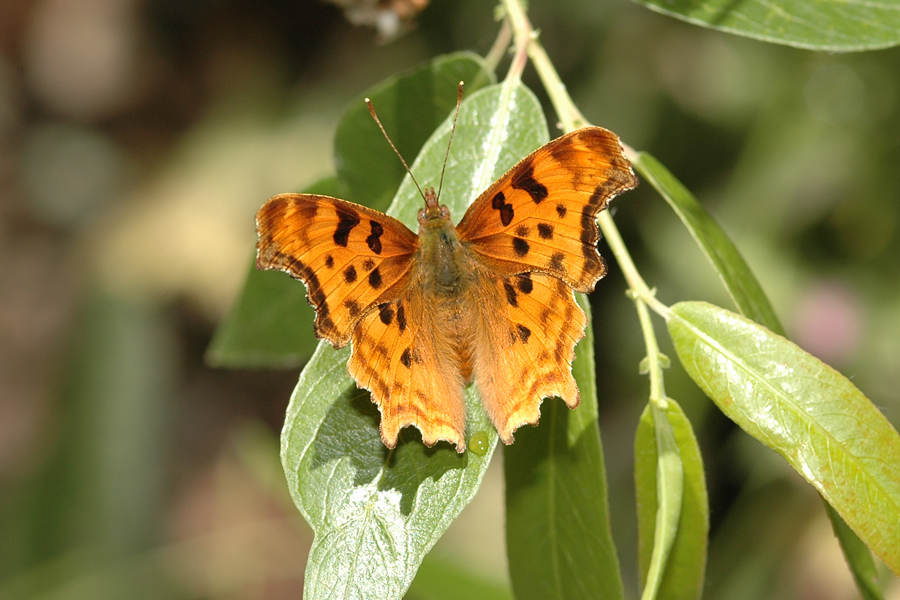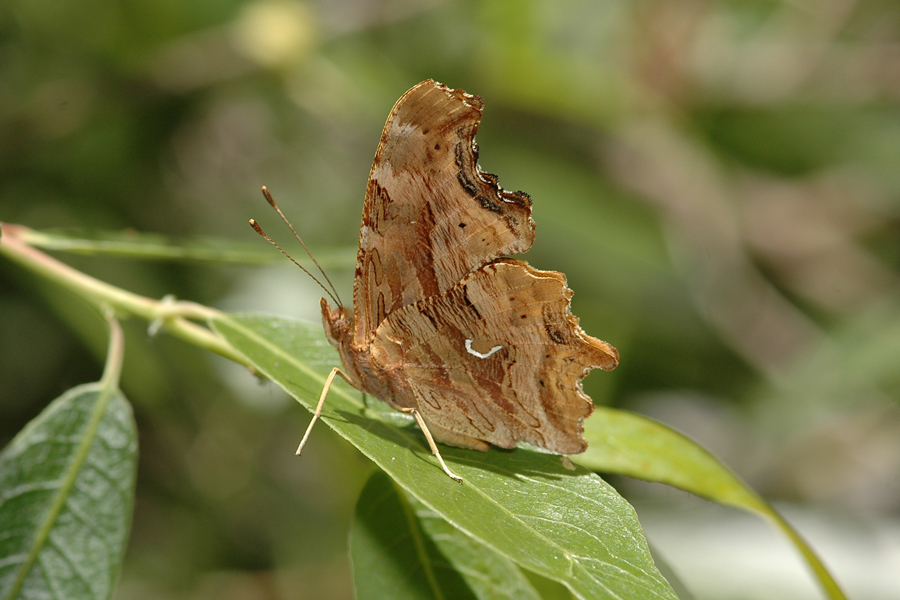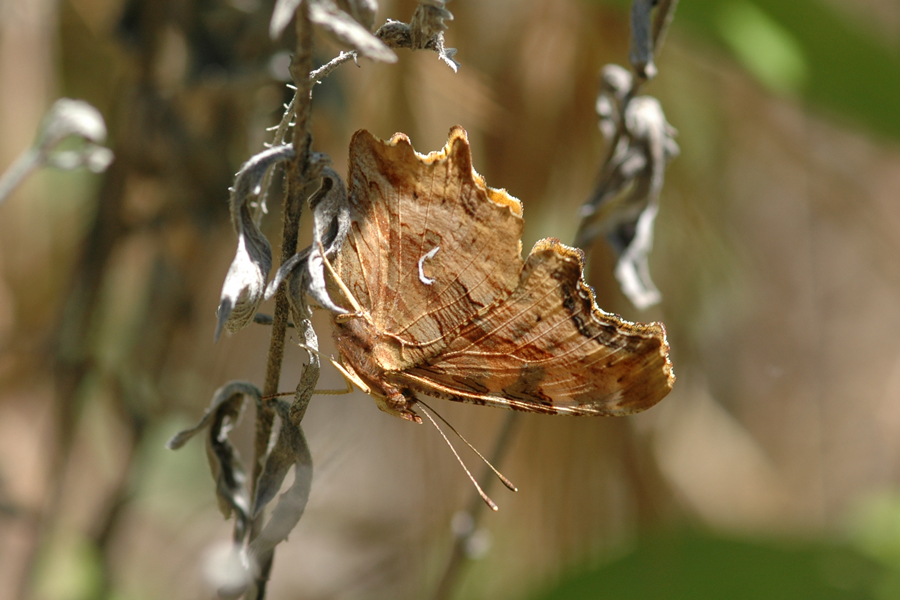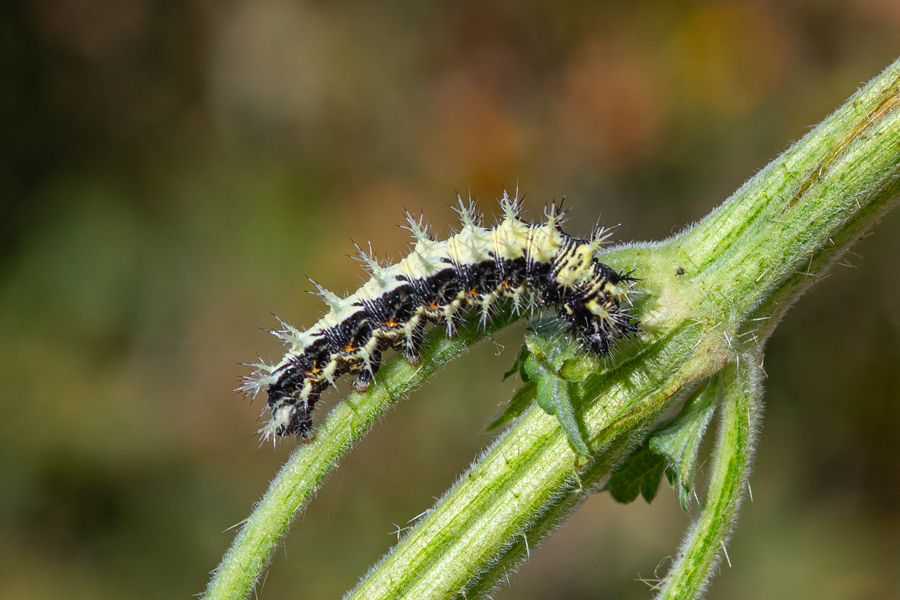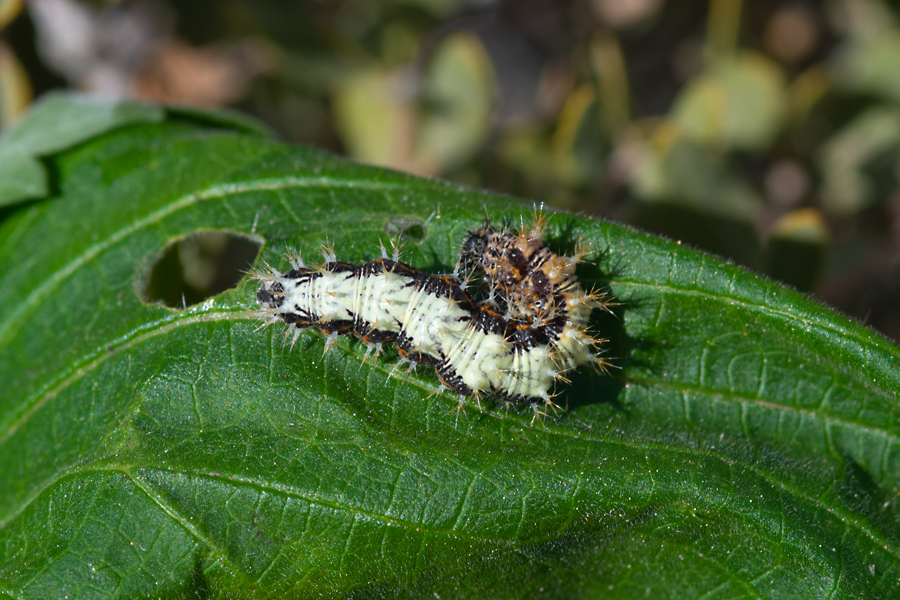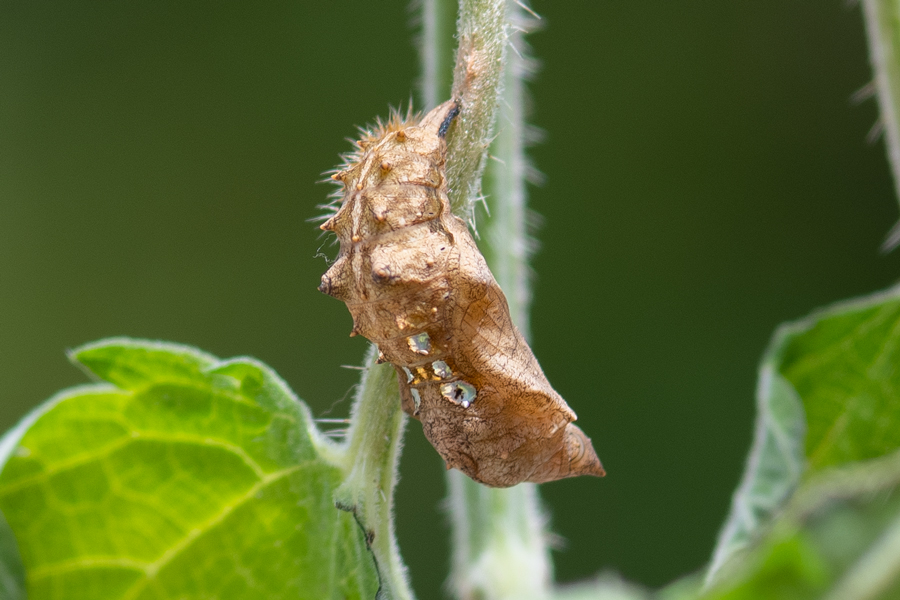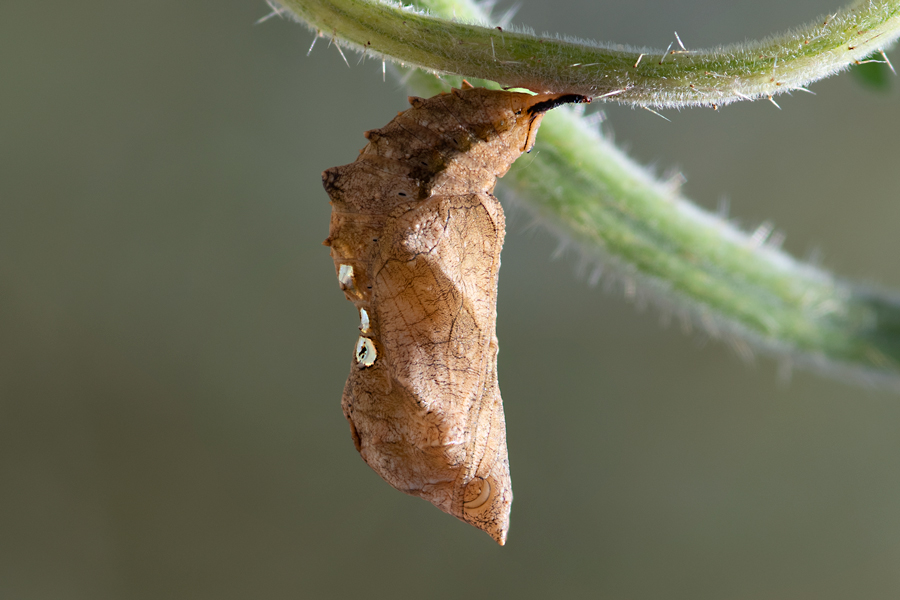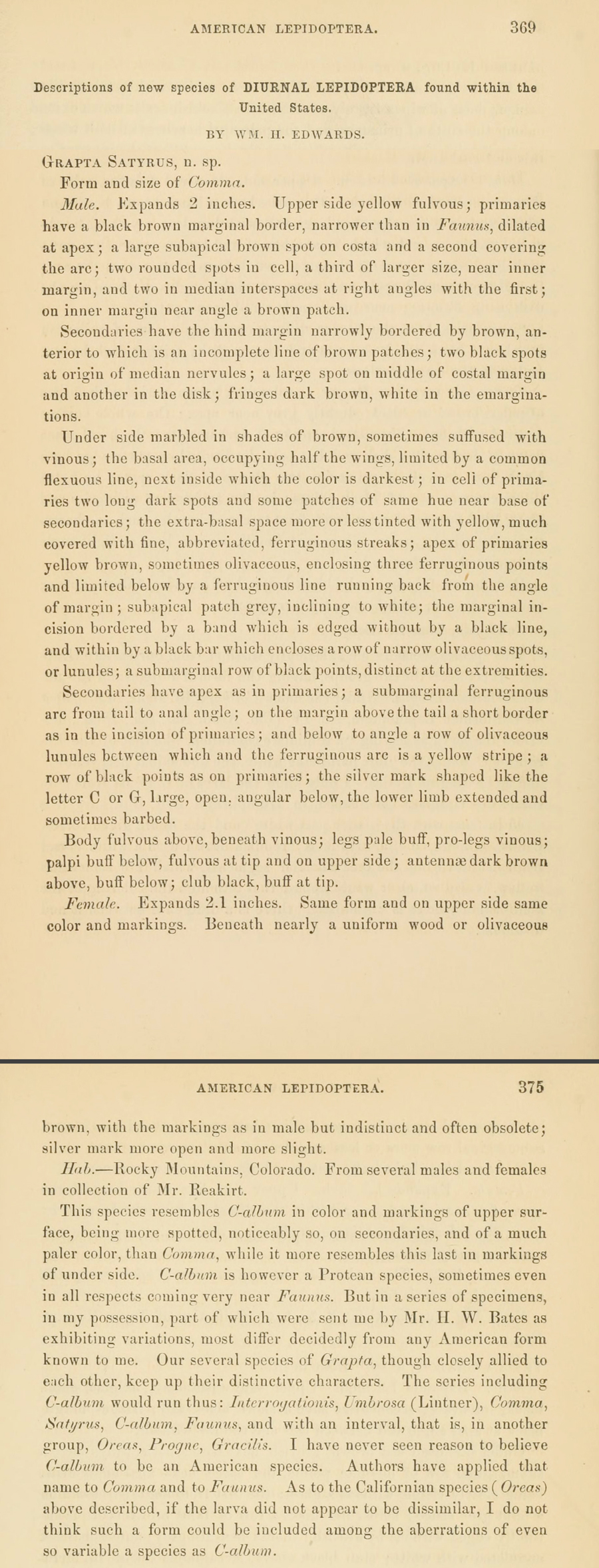Polygonia s. satyrus
Satyr Comma
Polygonia satyrus may be found much of the year in habitats where the usual host Urtica dioica does well. They spend the winter as adults, and have two to three broods. With their wings folded up, they blend well with tree bark and leaves, as the wing's outer edges resemble those of a dead leaf. Long-lived adults without good camoflage presumably wouldn't last long in the forests, thus the undersides of this and related species (mourning cloaks, California tortoiseshells, etc.) that allow them to seemingly disappear against trees.
Eggs (which are green) are laid under the nettle leaves, which the larvae eat. When older, the larva makes a nest inside a leaf it folds down, fastening the edges together. Red admirals fold the nettle leaf up when making a protective shelter. Also, red admirals use leaves near the top of the plant, often in full sun, while satyr commas use the lower leaves of nettles in shady areas.
